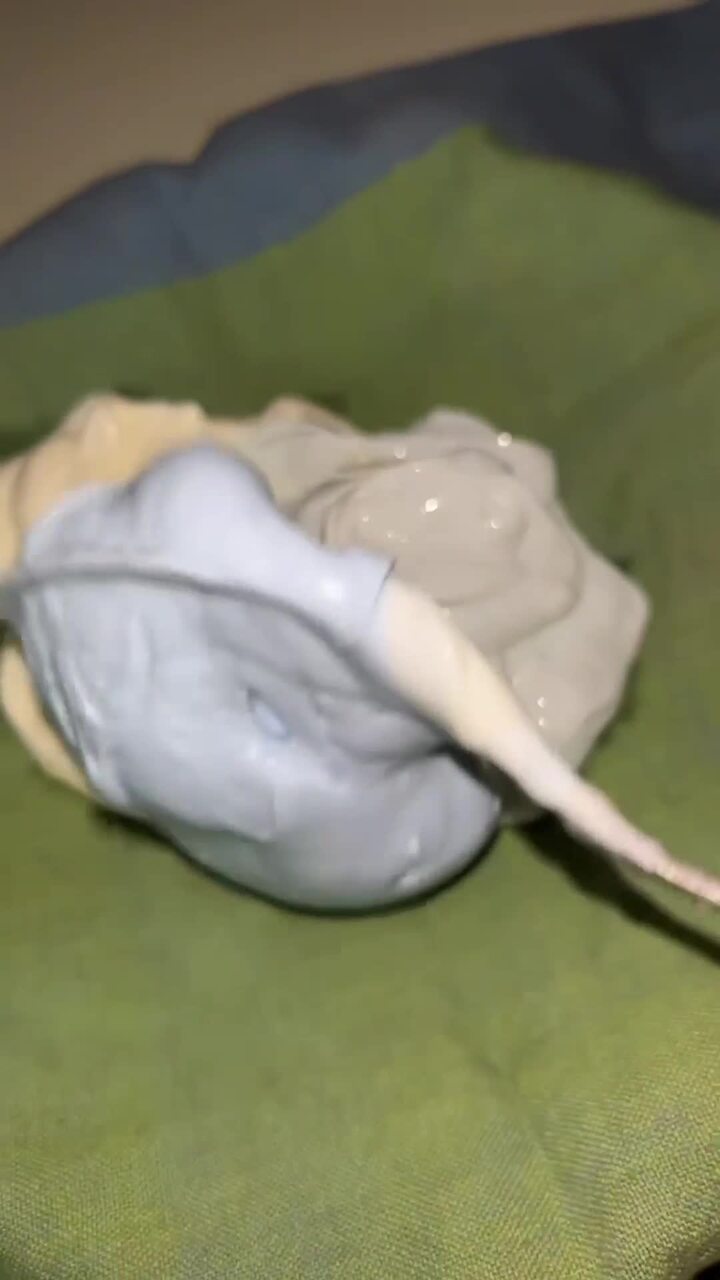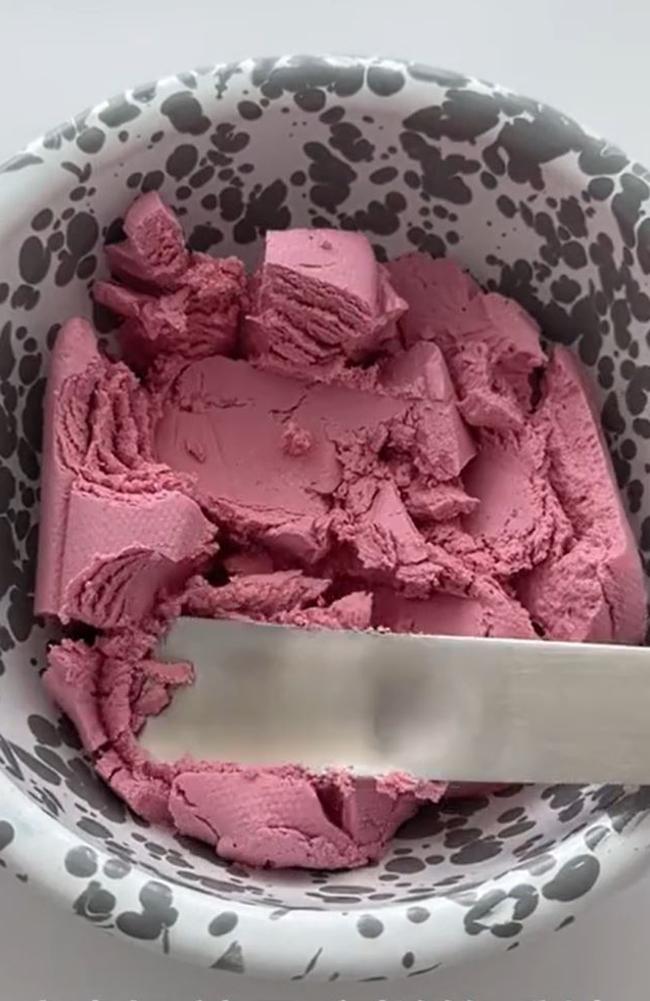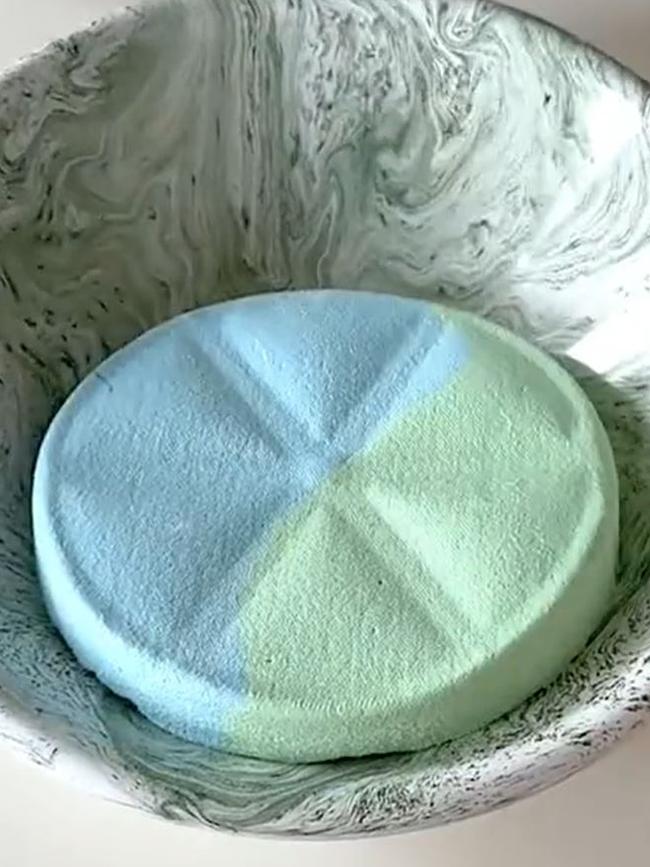‘Gagging’: Gross ‘dry yoghurt’ TikTok trend divides foodies
Internet users have a new breakfast fixation that requires only one ingredient. So how can it be so divisive?

Eat
Don't miss out on the headlines from Eat. Followed categories will be added to My News.
Another day, another viral food trend taking over our For You feeds that you’ll either love or hate.
Enter “dry yoghurt”, the bizarre craze that has already racked up tens of millions of views on TikTok.
Taking inspiration from the Middle Eastern spread labneh, dry yoghurt is made by straining Greek yoghurt in a sieve lined with a cheesecloth or paper towel, with something heavy placed on top to press out all the liquid.
After it drains in the fridge for at least 48 hours, you’re left with a thicker, drier consistency that some say resembles “clay” and can even be rolled into balls or various other shapes.
TikTokers have been experimenting with this trend, taking to the platform to share their unique spins on the simple recipe.

One popular variation involves adding food colouring or dehydrated fruit powder to the yoghurt before placing it in the sieve, resulting in a more aesthetically pleasing (or stomach-churning) creation that looks like rainbow goop.
Creator Michelle Brown used a mix of purple and blue-coloured yoghurts, while Doorknob Girl made a pastel dried yoghurt bowl in shades of pale blue.
Then came the toppings, because TikTokers love anything “loaded.”
Kyle Ciaruri topped his bowl of dried yoghurt with fruit, chocolate, and a wafer, likening the texture to cream cheese.
Then The Princess Daily Life added frozen fruits and nuts to transform theirs into a dessert bowl.


As the videos rolled in, so did the reviews, which were extremely mixed.
“I’m impressed,” one creator said.
“The texture is literally like softened butter,” described another.
Meanwhile, others said they “hated the texture,” calling it “gross” and “dehydrated slime.”
One user admitted, “It made me gag,” while another claimed it was “the worst thing I have ever eaten.”


So far, this trend hasn’t made its way to Australia, with US-based content creators leading the craze — but it’s only a matter of time.
Labneh has already enjoyed its moment on TikTok in Australia, with local food bloggers experimenting with the cheese-like dip.
The Lebanese Plate went viral in 2022 for her take on the ‘butter board’ trend, using labneh topped with confit garlic, chilli oil, and olives, scooped up with crusty bread.
Bondi-based nutritionist Liv Kaplan also showed her followers how to make labneh, emphasising the importance of using full-fat yoghurt over low-fat options.
Labneh is not only packed with probiotics, but it’s also a great source of protein for a low number of calories.
A 28-gram serving of labneh provides 80 calories, five grams of protein, and six grams of fat, according to Healthline.
Additionally, labneh is thought to contain less lactose than other cheeses due to its straining and fermentation processes, which removes much of the whey and lactose from the final product.


Dry yoghurt isn’t the first time social media has sparked a controversial food trend, and it certainly won’t be the last.
Just a few months ago, the “viral cucumber salad” trend took off, which involved using a mandolin to slice cucumbers into thin pieces and mixing in a variety of condiments.
The trend was popularised by a creator called Logan, who added soy sauce, fish sauce, sugar, green onions, sesame oil, toasted sesame seeds, and MSG.
However, many who tried this trend ended up in the emergency room after slicing their fingers while trying it out.
Gold Coast fitness influencer Bec Hardgrave spoke out against the salad in August after she attempted to recreate it at home.
Having forgotten to use the safety guard while using a mandolin for the first time, she “took a good chunk of flesh off” and ended up in the emergency department.


Another controversial TikTok trend that might sound better than it is “protein diet coke”, which involves adding pre-made protein shakes to the soft drink for a protein boost.
However, a doctor warned that it’s not all it’s cracked up to be.
“Let’s get real — if your ‘protein’ comes from a pre-made shake, you’re likely getting more calories from sugar than from protein itself,” Dr. Zac Turner, a biomedical scientist and doctor, told news.com.au.
“The average ready-to-go protein drink can contain a lot of fillers, meaning that creamy addition to your Diet Coke may end up countering your sugar-free intentions.”
More Coverage
Originally published as ‘Gagging’: Gross ‘dry yoghurt’ TikTok trend divides foodies





